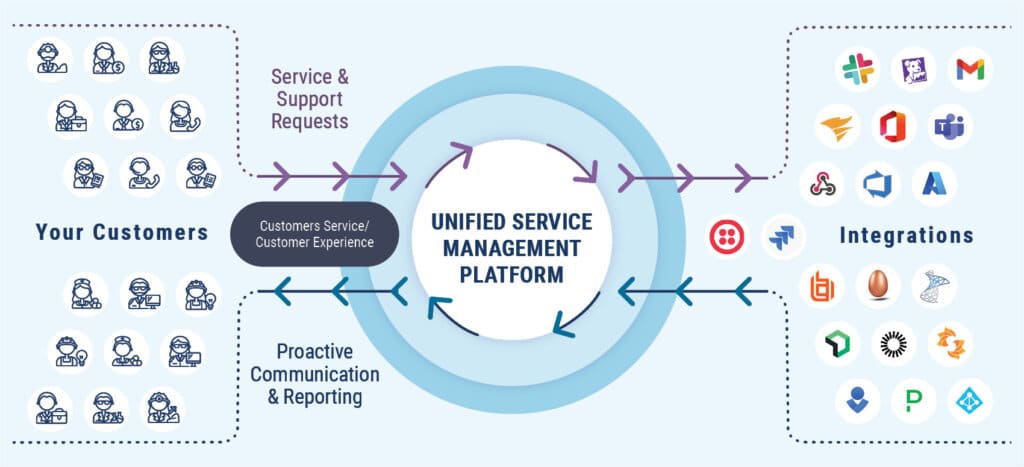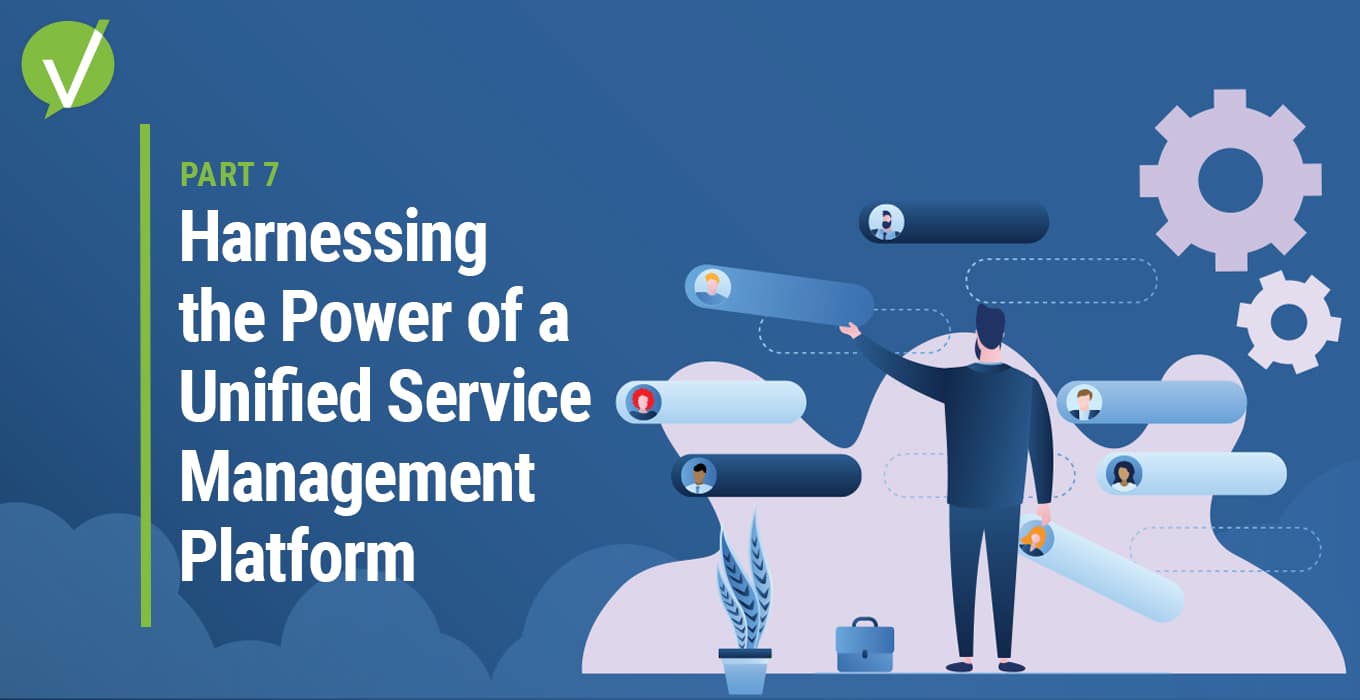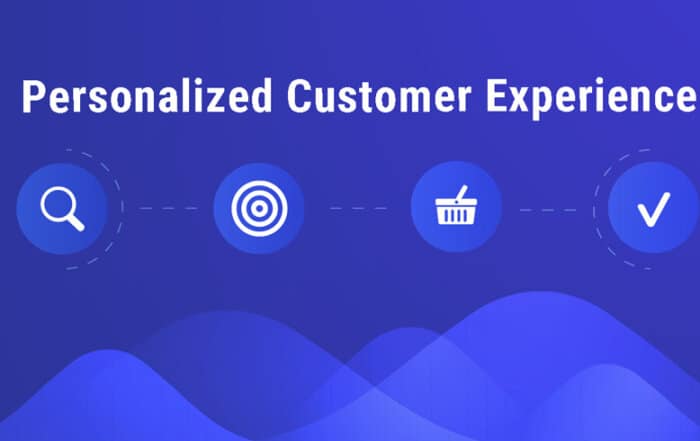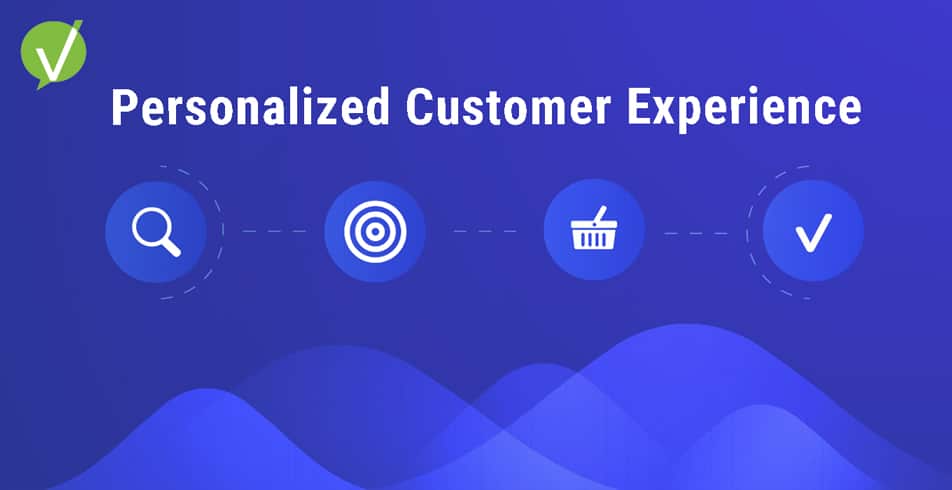Harnessing the Power of a Unified Service Management Platform
Introduction
As we arrive at the seventh post of our ten-part series covering The Complete Guide to Customer Service Transformation, the focus shifts towards Unified Service Management Platforms, not only on the immense value they provide, but also on how they can help to revolutionize the way customers are served.
The Vision of a Unified View
The concept of having a single, comprehensive view into an enterprise isn’t new, but it’s still an elusive goal for many B2B companies. Various challenges impede this, such as growth through mergers and acquisitions, operational silos in large or multinational corporations, or handling multiple brands/products. However, innovative service organizations are turning to technology platforms that can provide an integrated and clear view into a service organization and its adjacent systems.
“But technology by itself is not going to solve this. A unified approach starts with organizational culture and management. In most cases, this means tearing down artificial walls among sales, marketing and customer service teams and building a data-driven culture across the entire company.”
– Anthony Smith, Forbes Councils Member, Founder and CEO of Insightly
The Power of a Unified Service Management Platform
A Unified Service Management Platform can transform your customer service organization. It provides visibility into customer-relevant data, helping your team better address all use cases, track, and report essential KPIs, and tailor service provision at the individual customer level. The result? A holistic view of your customer across the enterprise.

Instant Benefits of a Unified Service Management Platform
- Consolidated Customer Insight: Eliminate the need for juggling multiple systems to gain customer insight. A Unified Service Management Platform brings all customer data into one platform for a 360-degree view of each customer, profoundly impacting issue prioritization and resolution.
- Unified System Data: Integrate your line-of-business software to boost service efficiency, workflows, and automation. This holistic view of your service operation can pre-empt problems and manage hardware expirations, version control, and compliance.
- Single Source of Data: Integrated reporting across all solutions allows you to monitor KPIs holistically to gain insights necessary to drive positive changes.
- Proactive Customer Service: Implement strict service level and operational level agreements to ensure you meet agreed business plans and contractual obligations with customers. Proactive communication around service lapses improves customer satisfaction.
- Efficiency and Resource Optimization: Harness technologies like routing, multiple resolver groups, service level agreements, self-service interfaces, service catalogs, business automation tools, advanced reporting and analytics, load balancers, and surveys to increase efficiency and optimize resources.
- Customer Empowerment: Implement self-service technologies and a knowledge base to help customers resolve their own problems, reducing the need for human interaction and leading to faster, more cost-efficient resolution.
- Improved Team Oversight and Communication: Enhance team collaboration and management visibility into operations for faster customer resolution times and proactive problem resolution.
- Business Intelligence: Leverage business intelligence to uncover new efficiencies and support ongoing process refinement, leading to improved customer satisfaction.
In Summary
As we move into the future, a Unified Service Management Platform will increasingly become a cornerstone of effective customer service. It promotes a synergistic blend of efficiency, proactive service, transparency, and intelligent data use, all centered around the customer.
By embracing a Unified Service Management Platform, businesses can unlock a multitude of benefits that streamline their customer service operations and enhance customer satisfaction. Consolidating customer insight, integrating system data, and establishing a single source of data empowers organizations to make informed decisions and prioritize customer needs effectively. With proactive service, optimized resource utilization, and customer empowerment through self-service options, businesses can deliver faster and more cost-efficient resolutions.
Additionally, improved team oversight and communication, coupled with the power of business intelligence, contribute to enhanced operational efficiency and overall customer satisfaction. So, take a moment to consider what a unified service management platform means for your organization.
In the next blog post of the series, we review chapter 8 – Self-service strategies for B2B enterprises. Stay tuned!
Additional Resources:
Vivantio: Integrate New CX Solutions
Harvard Business Review: The Age of the Continuous Connection













